GENERAL COMPENDIA
EMERGENCY MANUAL: COGNITIVE AIDS FOR PERIOPERATIVE CRITICAL EVENTS
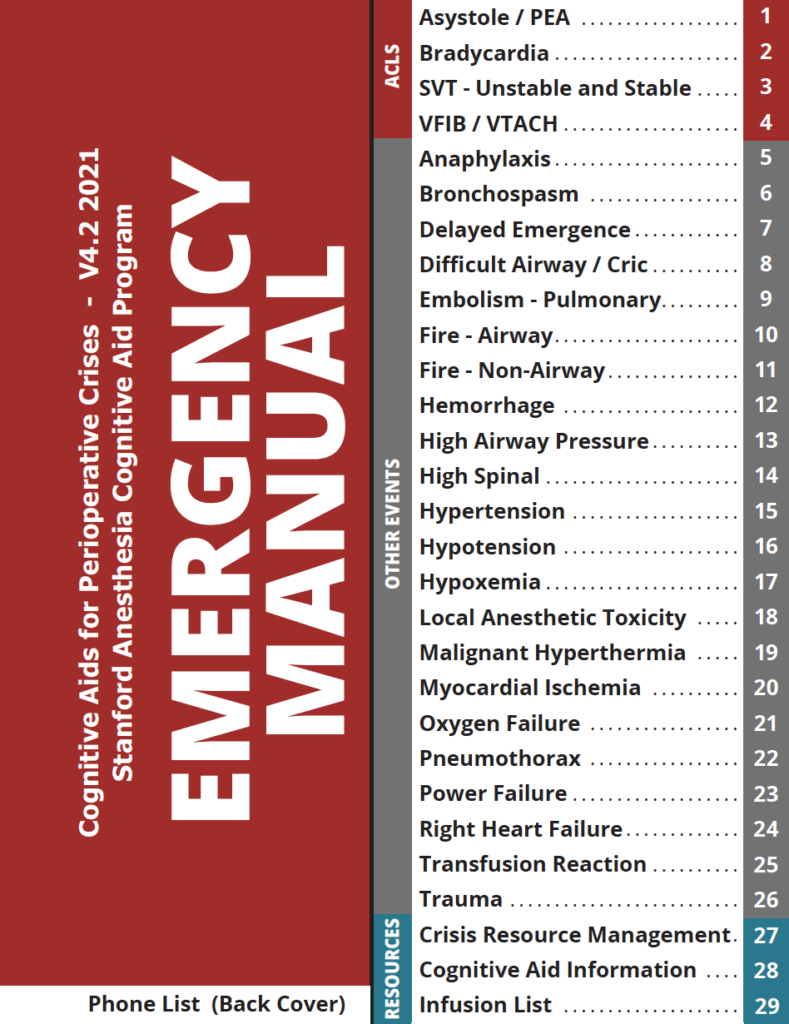
Stanford Anesthesia Cognitive Aid Program
Containing 26 crises, this tool was developed by the Stanford Anesthesia Cognitive Aid Program. Development and revisions incorporate iterative simulation testing over multiple decades, research from clinical crises (See 2020 Anesthesia and Analgesia “Clinical uses and impacts of emergency manuals during perioperative crises,” literature content updates, and NASA AMES design expertise. Latest update is V4, 2021. To download this manual for printing or as an interactive PDF, free of cost click here.
To access translations into other languages, click here.
OPERATING ROOM CRISIS CHECKLISTS
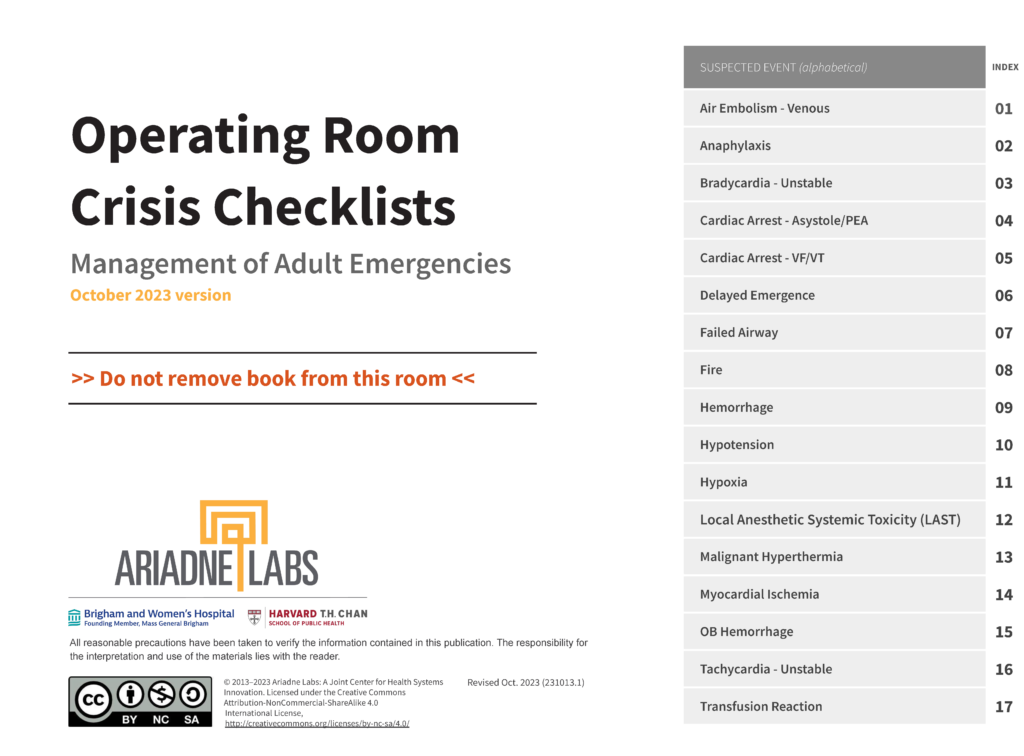
Ariadne Labs
These checklists were developed by the team at Ariadne Labs with the goal of improving care during 17 of the most common operating room crises. The checklists were updated in October 2023 to include a new digital and mobile-friendly version of the checklists and also includes new tools to edit checklist content to meet varying local needs. The checklists were tested in a randomized control simulator trial and the results have been published in the New England Journal of Medicine Article, “A Simulation-Based Trial of Surgical Crisis Checklists”. For more information and to download these checklists free of cost click here.
To access translations into other languages, click here.
EGENA
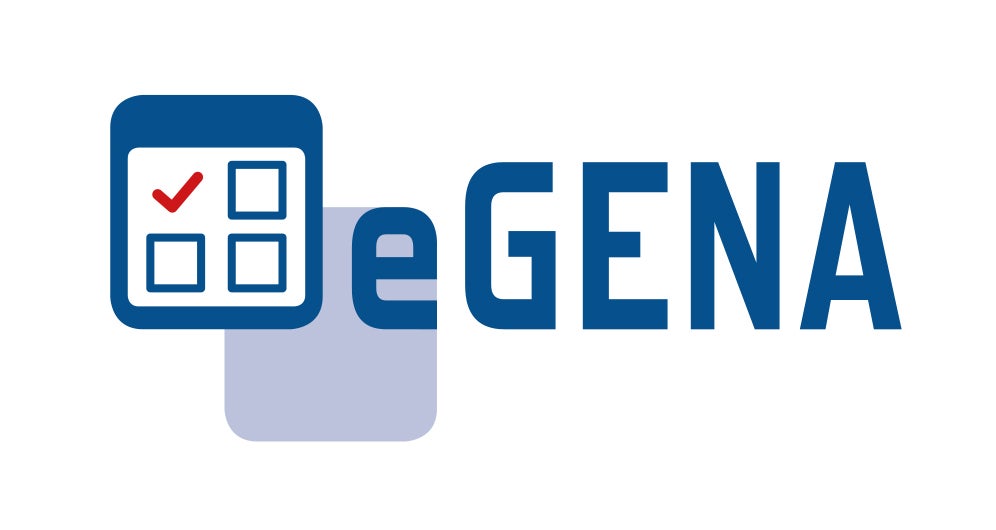
eGENA German Cognitive Aid Working Group
eGENA is a digital interactive cognitive aid for intraoperative crisis management in anaesthesia that offers information for a multitude of perioperative complications.
Now available in English!
Association of Anaesthetists Quick Reference Handbook
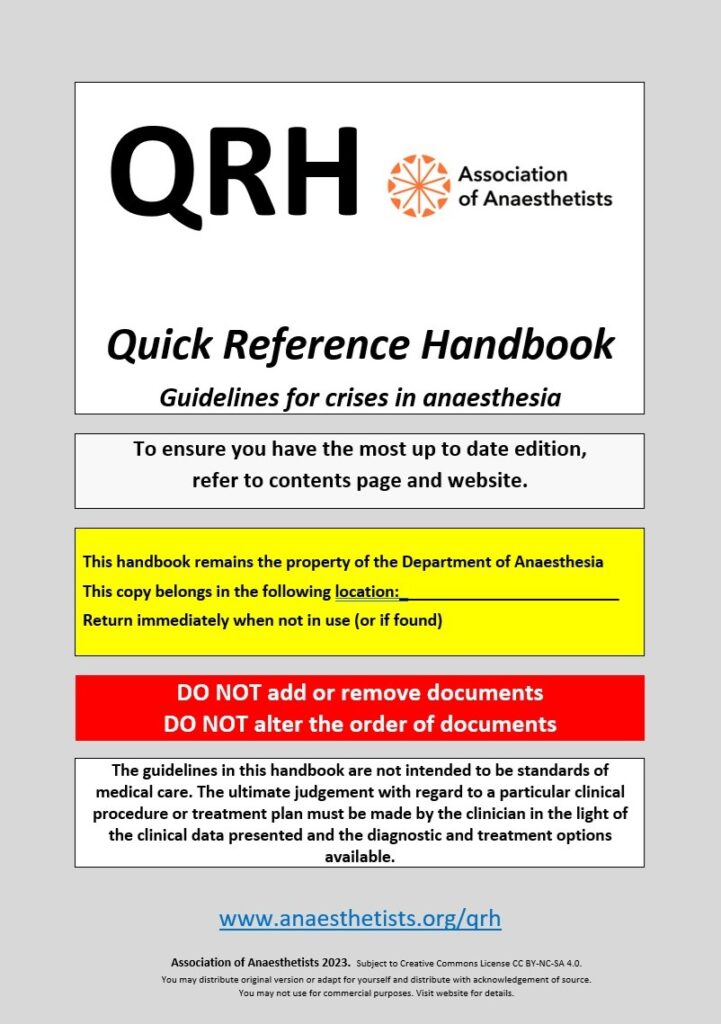
Association of Anaesthetists Quick Reference Handbook
The Quick Reference Handbook (QRH) is a collection of guidelines for unexpected or uncommon anaesthesia-related emergencies. It was created by the Association of Anaesthetists and aims to ensure the response to a crisis is as organized and all-encompassing as possible, at a time when the cognitive load can impair performance. To access these tools, please click here.
SUBSPECIALTY ANESTHESIA CHECKLISTS
LABOR AND DELIVERY CRISIS CHECKLISTS & OB EMERGENCY MANUALS
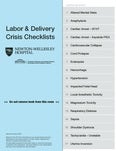
Newton-Wellesley Hospital Labor & Delivery Crisis Checklists
These tools were developed in collaboration with obstetrical staff at Newton-Wellesley Hospital in 2016 and updated in 2018. They focus primarily on obstetrical management of critical events in labor and delivery. To download these checklists click here.
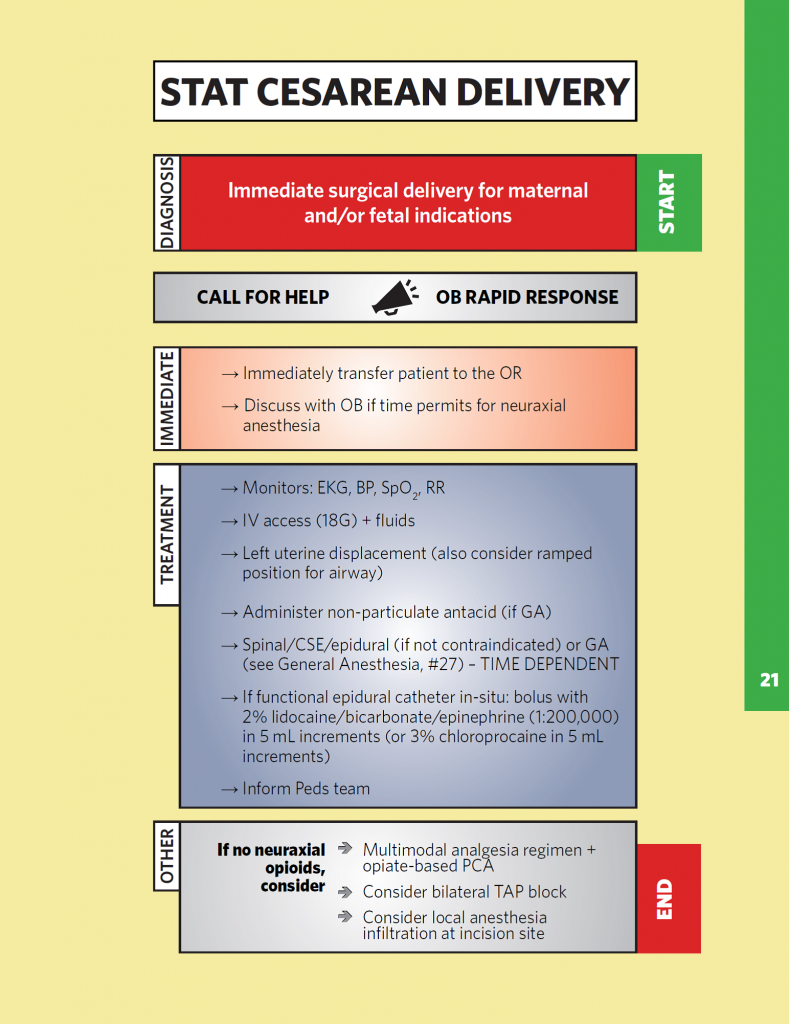
Stanford OB Anesthesia Emergency Manual
Cognitive Aids in Medicine Group at Stanford
This tool, containing 26 critical events and 5 procedures, was developed by the Cognitive Aids in Medicine Group at Stanford. The aim of this obstetric anesthesia-specific emergency manual is to improve patient care and safety of peripartum patients locally, nationally and internationally.
To download this manual free of cost click here.
PEDIATRIC CRITICAL EVENT CHECKLISTS
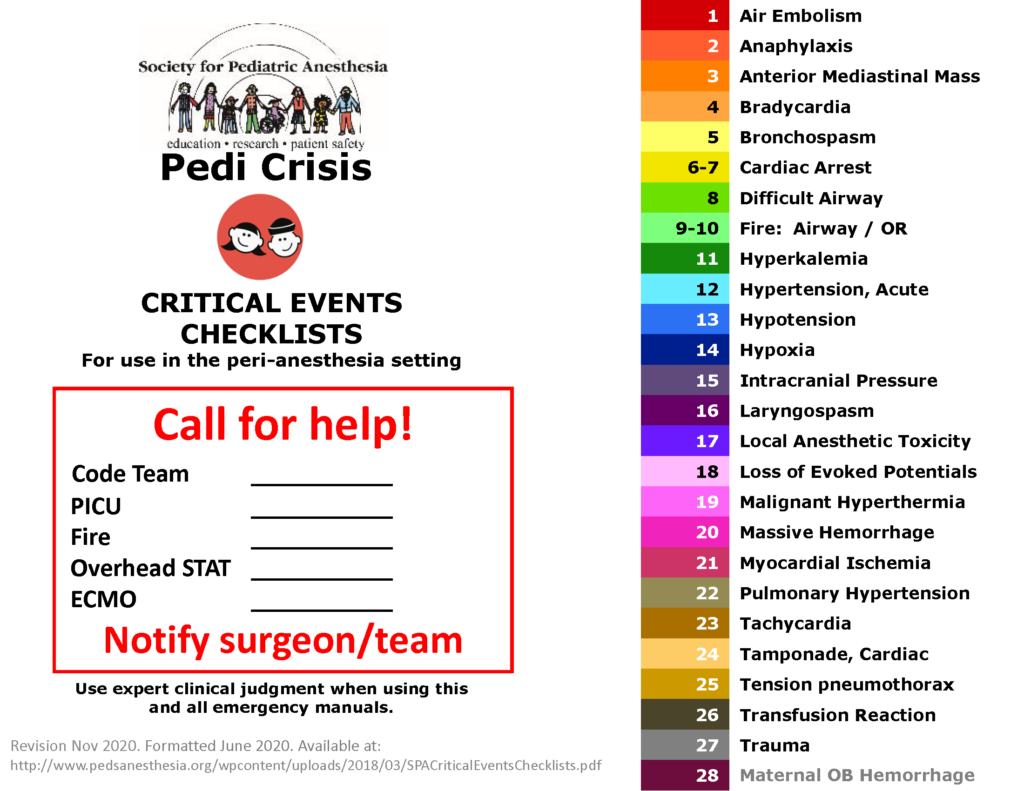
Society for Pediatric Anesthesia (SPA)
This set of checklists was created by the SPA Quality and Safety Committee. For more information and to download these checklists click here. To access the free mobile app please click here.
THORACIC CRISIS MANUALS
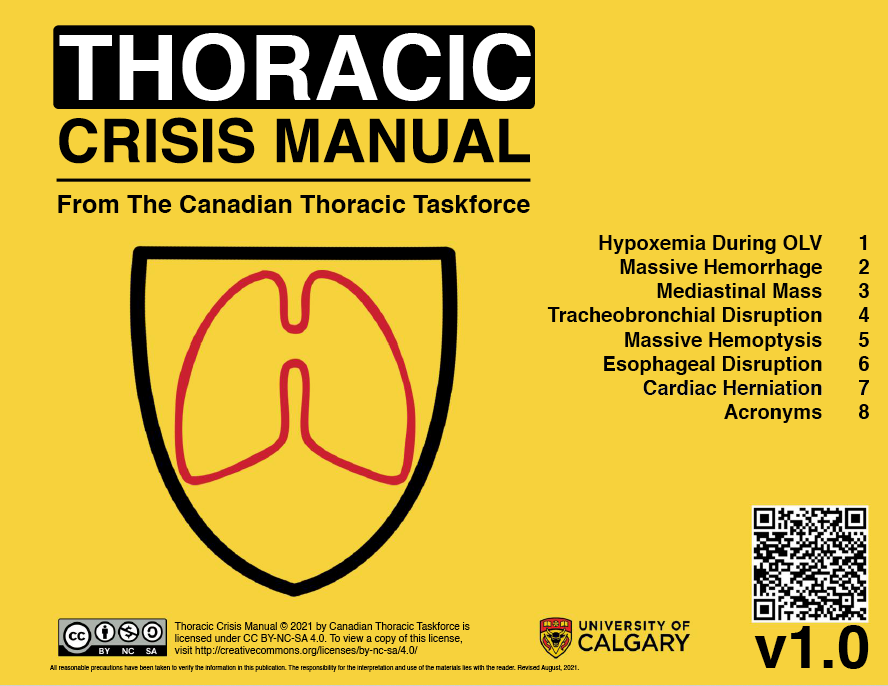
Canadian Thoracic Taskforce
The Thoracic Crisis Manuals are a free resource for anesthesiologists to prepare for common thoracic challenges, for managing intraoperative thoracic crises, or for guiding debrief sessions following such events. The PDF for the manual is accessible through the University of Calgary website.
COGNITIVE AIDS FOR THE MANAGEMENT OF DETERIORATING SURGICAL PATIENTS (CAMDS)
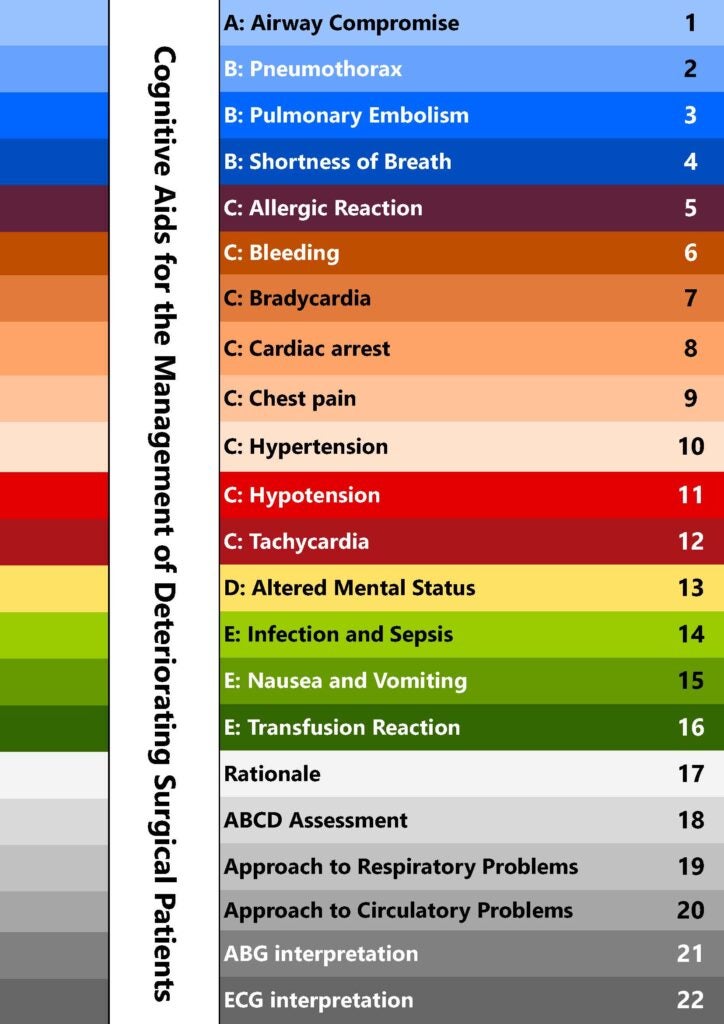
Amsterdam University Medical Centers
The Cognitive Aids for the Management of Deteriorating Surgical Patients (CAMDS) are a free bundle of cognitive aids developed by the departments of Anesthesiology, Surgery and Intensive Care of the Amsterdam, Amsterdam University Medical Centers (AUMC). Please contact Dr. Lena Koers at lena.koers@gmail.com with any questions or to request Microsoft Publisher versions of the manuals for local customization.
The PDF for the manual is available here.
COVID-19 COGNITIVE AIDS
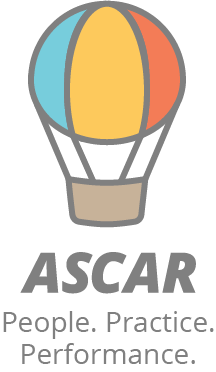
RNS ASCAR, Royal North Shore Hospital, Sydney, Australia
The ASCAR Group follows one simple mission: the support of our colleagues to perform excellently during crises, by designing cognitive aids that are optimised for our high stakes environment.
The ASCAR Group allows you to locally customise with text to match your own institutional protocols.
Trauma: This Cognitive aid booklet is designed to assist with the set up and decision making for Code Crimson trauma patients.
https://www.ascargroup.com/trauma
Obstetric: These tools were created as a resource to assist consultant anaesthetists, who do not routinely provide anaesthesia to obstetric patients, as well as anaesthetic trainees, in rapidly accessing relevant clinical information to support their obstetric
https://www.ascargroup.com/obstetric-manual
Paediatric Handbook: For the non-specialist centre is designed to assist the experienced non-paediatric Anaesthetist manage paediatric patients.
https://www.ascargroup.com/paediatric-anaesthesia
Neuro Neuroanaesthesia cognitive aids were designed to assist in management of Neuroanaesthesia crises. The aids have a focus for the ergonomics and logisitics occurring at Royal North Shore Hospital but are likely to be very useful in your own institution too.
https://www.ascargroup.com/nascar
NEUROANESTHESIA CRISIS MANUALS
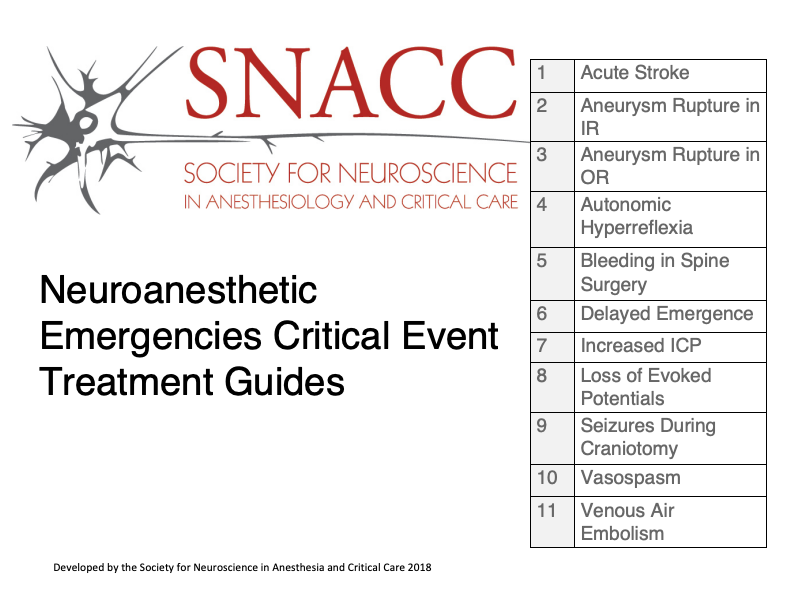
Society for Neuroscience in Anesthesiology and Critical Care (SNACC)
The purpose of this crisis manual is to be a resource for anesthesiologists and to prepare them for stressful situations that may arise during neurosurgical procedures. They were released in 2018. To download the guide, click here.
OTHER EMERGENCY CHECKLISTS
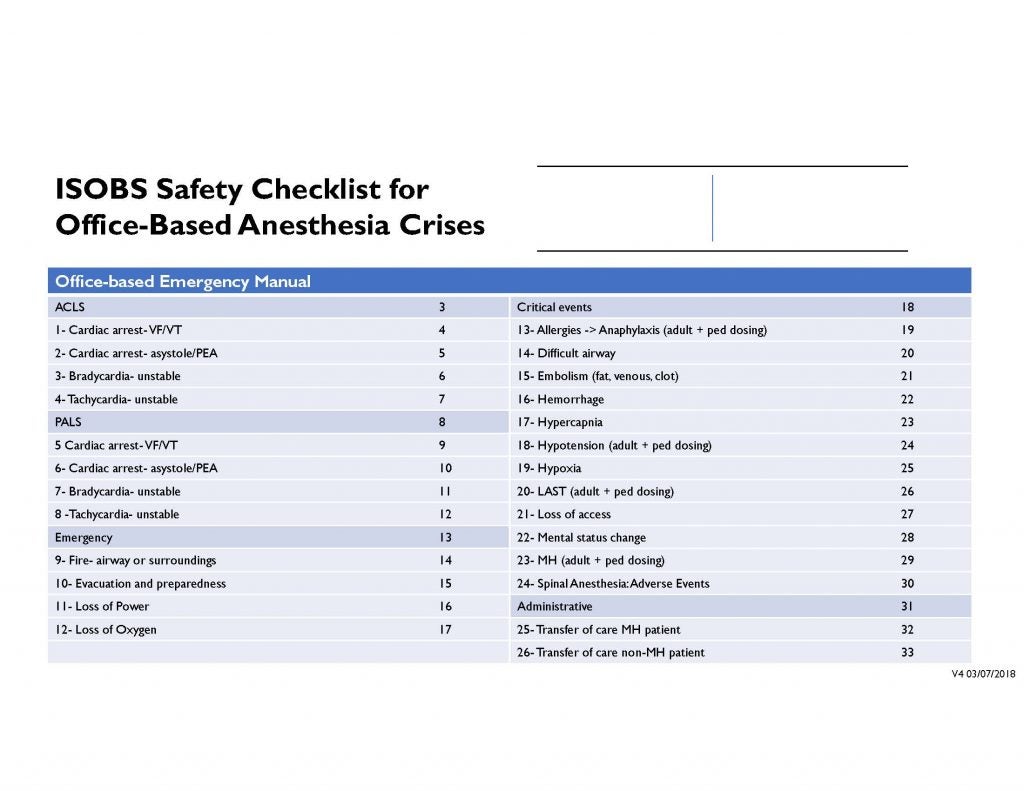
ISOBS Safety Checklist for Office-Based Anesthesia Crises
ISOBS Safety Checklist for Office-Based Anesthesia Crises. Safety Checklist for Office Based Surgery provides an organized approach to prepare and perform procedures in the medical office or outpatient setting. To download the checklists click here.
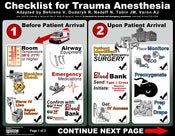
Checklist for Trauma Anesthesia
Adapted by Behrens V, Dudaryk R, Nedeff N, Tobin JM, Varon AJ from: A checklist for trauma and emergency anesthesia. Anesth Analg. 2013 Nov;117(5):1178-84. This cognitive aid describes the essential steps to be performed: before patient arrival to the hospital, on patient arrival to the hospital, during the initial assessment and management, during the resuscitation phase, and for postoperative care. To download this checklist click here.
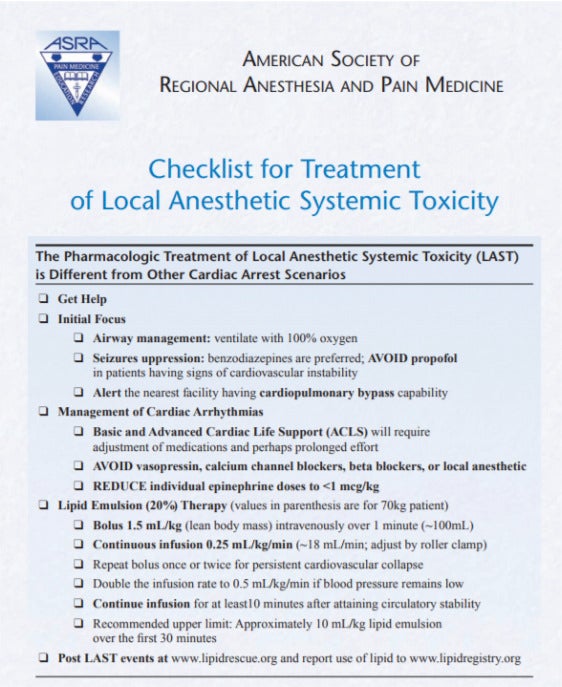
Checklist for Treatment of Local Anesthetic Systemic Toxicity
American Society of Regional Anesthesia and Pain Medicine (ASRA)
This tool was released in 2010 as a practice advisory from the American Society of Regional Anesthesia and Pain Medicine (ASRA). For more information or to download this checklist click here.
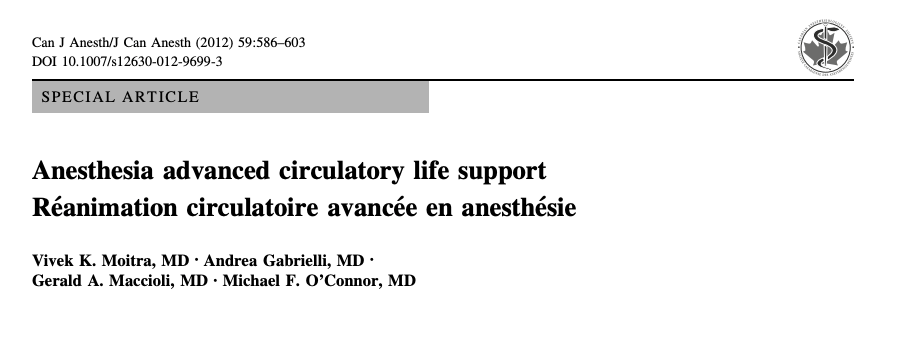
Anesthesia Advanced Circulatory Life Support – Canadian Journal of Anesthesia
This article highlights modified ACLS algorithms to treat cardiac arrest in the perioperatiave setting. To access the full text article click here.
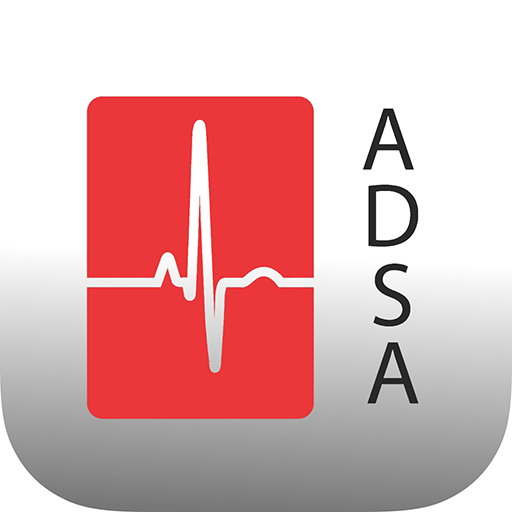
ADSA – The Ten Minutes Saves A Life! Manual and Application
This manual and electronic application is the first cognitive aid resource for all dental practitioners and was funded through a grant from the Anesthesia Research Foundation of the American Dental Society of Anesthesiology (ADSA).
The Ten Minutes Saves A Life! Manual and Application is divided into sections containing common critical events seen during medical emergencies in the dental office. The algorithms vary with the training level of the provider and are meant to guide management of the crisis during the first 10 minutes until emergency medical services arrives. Drug doses are taken from multiple sources including drug package inserts and authoritative texts. They are automatically populated into the algorithms once the weight of the patient is entered. There is also a sophisticated local anesthesia calculator to ensure safety with all anesthetics. To access these tools, please click here.
